#Xuanzang 玄奘
Explore tagged Tumblr posts
Text
April 12, Xi'an, China, Daci'en Temple/大慈恩寺 and the Giant Wild Goose Pagoda/大雁塔 (Part 1 - Temple and Architecture):

Daci'en Temple is famous in popular culture mainly for one reason: the monk Xuanzang/玄奘, or the real person who inspired the character of Tang Sanzang/唐三藏 (sometimes translated as "Tripitaka") in the novel Journey to the West/西游记. Xuanzang was in charge of Daci'en Temple after he returned to China in 645 AD from his journey throughout Central Asia and India. More on him later.
The temple is also known for two more things, first is its importance to Chinese Buddhism, as the temple is considered the cradle of the Consciousness-Only School (weishizong/唯识宗) and the Dharma Characteristics School (faxiangzong/法相宗)(both are part of Chinese Mahayana Buddhism), and second is the Giant Wild Goose Pagoda (built in 652 AD while Xuanzang was in charge of the temple).
The temple has been rebuilt over the years, and the current temple (excluding the pagoda) was mainly built in 1466, during Ming dynasty, thus the current temple consists of Ming-era architecture:


Drum and bell towers within the temple


Giant Wild Goose Pagoda in the distance

More pictures of the architecture. I have to say it's better preserved here than in other places so far...





Coming up to the Mahavira Hall/大雄宝殿 of the temple

As mentioned in the previous posts on Qinglong Temple, I avoided taking pictures of the Buddha statues as this is considered disrespectful. But because it's just hard to avoid including them in pictures of the architecture, the statues may be partially visible sometimes.


Approaching the Tushita Hall/兜率

More pics of the architecture, note the pattern on the windows, called chuangling/窗棂. This particular one is a "three-crossing"/三交 pattern, the highest grade of chuangling.
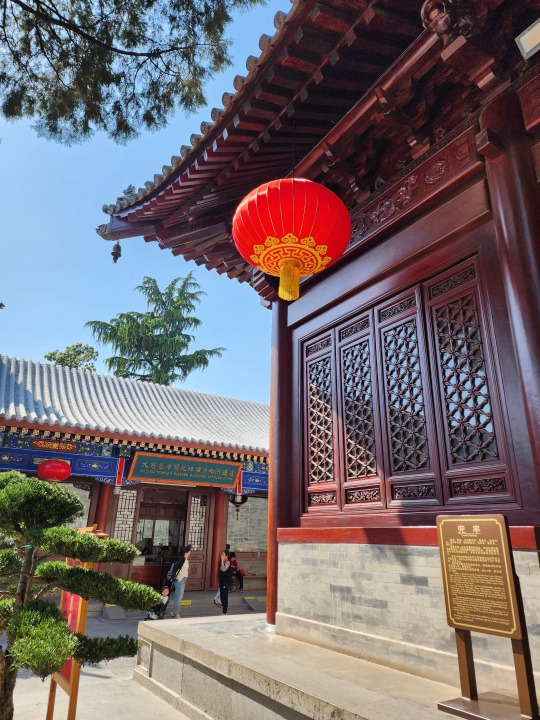

There were two visiting monks taking pictures of this relief behind Mahavira Hall, so it's probably okay to snap a picture of it. The interesting thing is the bian'e/匾额 above it, which says 人天欢喜 (right to left: "human and heaven rejoice together"). Usually it's "heaven" before "human" (天人), but here it's clearly "human" before "heaven".



The Guanyin Hall/观音殿. Guanyin is the Chinese name for Avalokitesvara. The smaller red lanterns are where visiters hang their wishes from:

And finally the Giant Wild Goose Pagoda, one of the landmarks of Xi'an. This pagoda was originally built to house all of the Buddhist texts and relics Xuanzang had brought back from India, and is the largest Tang-era brick pagoda remaining today. In Tang dynasty (618 - 907 AD), people who passed the imperial exams to become jinshi/进士 would tour around Chang'an on horseback with flowers in their hair and write poems before this pagoda, called "雁塔题名".
Before we entered the temple, I could hear a weird jingle-jangle from across the street, but it was only when we came up to the pagoda that I realized where the sound was coming from. There were bells hanging from every corner of every level of the pagoda, and they were pretty loud for their size.

Since it was pretty hot outside that day, to avoid possible heat stroke we didn't attempt to climb the pagoda (I don't think there's air conditioning inside considering that this pagoda is 1300+ years old.....). I think there were several important artifacts/relics inside? But I can find some pictures from online for part 3.



#2024 china#xi'an#china#daci'en temple#大慈恩寺#giant wild goose pagoda#大雁塔#xuanzang#玄奘#buddhist temple#chinese architecture#chinese history#mahayana buddhism#buddhism#architecture#history#culture
96 notes
·
View notes
Text
TRIPITAKA - the lost spiritual sequel to Cosmology of Kyoto was found
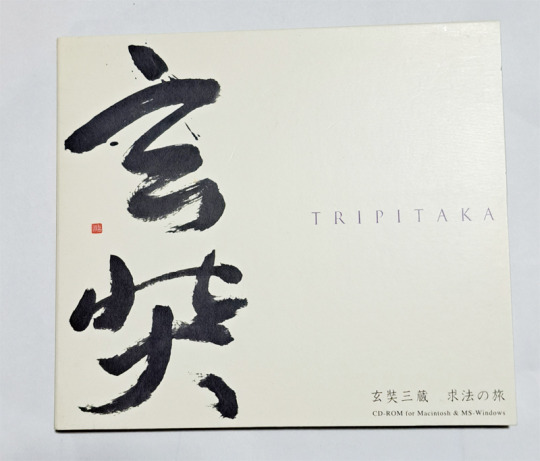
This post is a compilation of a series of tweets I have composed over a period of weeks during this summer.
For years, it was uncertain whether TRIPITAKA 玄奘三蔵求法の旅, by Soft Edge, had in fact ever been published. I remind the more absent-minded readers that this is the studio responsible for the mythical CD-ROM Cosmology of Kyoto, originally released in Japan in 1993, later published in the United States by Yano Electric in 1995. Knowledge of this their second and final production comes solely from the online CVs of producers Hiroshi Ōnishi and Mori Kōichi. No other information could be found online, and no actual copy of the game was known to exist.
Earlier this year, this disc surfaced at Yahoo Auctions. It sold for nearly $300 after 24 bids.

As suggested by its tile, which translates to Xuanzang Sanzo's Dharma-Seeking Journey, it was always assumed that the game illustrated episodes of the life of the celebrated Chinese Buddhist monk, particularly his 7th century pilgrimage to India. The captures printed on the back not only show a character highly reminiscent of the ancient scholar, they depict a variety of scenes taking place in China and India.
According to the severely incomplete archived version of PD Inc's website, the Japanese publisher responsible for this digipack, it was available for sale at museums hosting the 1999 Silk Road Journey To The West exhibition, which suitably matches the date printed on the back cover. However, this date presents yet another open question, as the Ōnishi-San and Kōichi-San bios both list it as a 1995 production.

The technical specifications may provide an enlightening clue, as they refer to Windows 95, 640x480px resolution and an 8-Bit color mode. This indicates that TRIPITAKA was indeed developed sometime between 1993 and 1995, although it was never published in the CD-ROM game circuit, certainly not in the immediate years after its development was completed. Combined with the data retrieved from the publisher's website, the edition shown here appears to have been produced solely for the occasion, as a means to diversify the museum shop catalog for this major exhibit, given the shared theme.
It would have been nearly impossible, had the program been in fact published in 1995, for a single copy to not have been spotted or mentioned online by the many Japanese collectors who have attempted to locate it for decades, unsuccessfully. On the other hand, a CD-ROM that was sold at a museum exhibit is likely to be purchased by visitors who were entirely unaware of the item's relevance as an elusive multimedia gem.
If a tangent is permitted here, both productions are inextricably linked with the museum space, and as far as I can speculate, Cosmology of Kyoto was, itself, also published with the intention of being made available in gallery stores in addition to computer game retailers. I say this because this was a production made possible by collaborative efforts including a variety of Japanese museums, to the extent these are referenced by name in the game's credits.
Considering the price at which the item was sold at auction, I was fairly certain that it was purchased by one such video game collector who knew exactly what they were bidding for. Later in July, I was able to locate the buyer and establish contact. Initially, the buyer was only able to produce this screenshot of the disc program launcher. The title reads "Cosmology of Asia", validating the claims that Soft Edge was in effect planning for series of edutainment software prior to its demise in the mid-90s.

In my second contact with the owner, I asked if he was available to produce a disc image and share it online for purposes of software preservation. The owner politely declined, stating that this was not something he was willing to do but offered to record the following gameplay video instead.
youtube
At a glance, the art style of Tripitaka is unsurprisingly similar to that of Cosmology. Most of its episodes occur during the day, whereas the latter was mostly played under the dark cover of night. The first scene depicts a dying Xuanzang reminiscing on his journeys in the company of a young chronicler. Structurally, both games are also nearly indistinguishable from one another, producing ample historical information for context, including detailed maps and chronologies.
TRIPITAKA was considered to be lost media for decades. As such, the importance of this footage could hardly be overstated. I would not hesitate to compare this development to the unearthing of Osamu Sato's Chu-Teng, the Eastern Mind sequel that was also deemed lost for many years, miraculously found during the time this blog was inactive.
I am delighted to have played a minor role in the unraveling of this thirty year old mystery, and can hardly contain my enthusiasm, as I now find myself equipped with sufficient information to produce a full post concerning a game about which I could not have written more than a sentence, just last year.
I would also like to thank the author of the @mendelpalace Tumblr for his timely alert regarding the Yahoo listing.
133 notes
·
View notes
Text
The Road of Xuanzang (2011) 玄奘之路


Director: Jin Tiemu Screenwriter: Jin Tiemu Starring: Wang Xinyuan Genre: Documentary / History Country/Region of Production: Mainland China Language: Mandarin Chinese Date: 2011-10-31 (Mainland China) Number of seasons: 1 Number of episodes: 12 Single episode length: 30 minutes IMDb: tt14669816 Type: Crossover
Summary:
Master Xuanzang is the most famous monk in China today. But his fame is not due to his dedication to the pursuit of Buddhism and his unpredictable cultivation, but from the famous classic "Journey to the West". However, in "Journey to the West", Master Xuanzang was portrayed as a weak monk who is wavering in his heart, always worried, homesick, arbitrary, fearful, and other secular emotions. While people admired the Monkey King who made trouble in the Heavenly Palace and acted chivalrously, they could not help but derogate and ridicule the fat monk Tang Seng. However, what the real Master Xuanzang was like is little known.
The documentary "Xuanzang's Road" tries its best to restore a real Master Xuanzang to the world. In order to seek the ultimate Mahayana Buddhism, he ignored the ban of the court and sneaked through Yumen Pass, crossed the snow-capped mountains and deserts, and spent 19 years traveling to 110 countries. In a foreign country, he received supreme honor and admiration, but he did not forget his original intention and returned to his motherland with the classics of Buddha and his disciples, including the Great Prajna Sutra and the Yogacarabhumi Sutra. The history of the great monk's spread of Buddhism still brings people to tears.
Source: https://movie.douban.com/subject/6952630/
Link: N/A
6 notes
·
View notes
Text

Xuanzang, autore: ignoto
Titolo originario: 玄奘三蔵像
---------------------
Xuanzang, unknown author
Original title: 玄奘三蔵像
5 notes
·
View notes
Text

Heart Sutra ~ A sutra that describes “The Heart of the Perfection of Wisdom" (9)
Hoichi the Earless – A Japanese tale about spiritual merit of the Heart Surtra
When Xuanzang crossed the Silk Road to India, recited the heart Sutra and protected himself from evil demons through its spiritual power. (Ref). There is a folk tale in Japan that tells its spiritual merit.
A young Biwa-hōshi (lute monks) named Hoichi lived at Amida-dera Temple in Akamaseki. Hoichi was a master storyteller of the Tale of the Heike, especially the Dannoura battle, which is said to ‘make even the demons shed tears’.
The Battle of Dannoura was a historical fact, once a decisive battle between the Genji and Heike clans, with many Heike warriors and court nobles sinking to their deaths in the sea, and perished. The temple was built on the coast overlooking Dannoura to commemorate the Heike family.
One night, when the abbot is away, a warrior suddenly appears out of nowhere. Hoichi is begged by the warrior to go to the palace of the ‘nobleman’ to play his biwa. Although the blind Hoichi could not understand them, many noblemen seemed gathering. They requested a piece about the battle of Dannoura. Everyone is sobbing aloud and looking intensely moved. Hoichi is asked to play a whole week, and starts going out every night.
The abbot became suspicious and had temple men follow him one night. It was raining heavily, and Hoichi was alone in the empty cemetery of the Heike clan, playing his biwa in front of the grave of Emperor Antoku, who had died an untimely death as a child, surrounded by a frighteningly large number of demon firebrands. The astonished temple men forcefully bring Hoichi back home. The abbot then, knowing the nature of the grudge spirits that the body parts on which the sutras are written are transparently reflected and invisible, copied the Heart Sutra on Hoichi's whole body together with the temple men, so that the grudge spirits could not recognise Hoichi. However, they did not realise at the time that they had forgotten to copy the sutra on his ears (auricularia).
That night, as Hoichi sat alone, the warrior came for him as usual. However, Hoichi's body, on which a scripture is written, is invisible to the grudge spirit. Puzzled, the grudge spirit looked around for Hoichi, and found only his ears in the darkness, which were forgotten to copy the sutra. The grudge spirit used its monstrous power to tear the ear off Hoichi's head. The spirit left, silently. When the abbot returned at dawn, he realised that when he had written the Heart Sutra on Hoichi's body, he had forgotten to write the sutra only on his ears, and apologised to the bloodied Hoichi for his oversight.
After that, the Heike ghost never appeared before Hoichi again, and the wound in Hoichi's ear was soon healed by the good doctor. This strange event spread throughout the world, and he came to be known as ‘Hoichi the Earless’.
(There is also a version where Hoichi dies.)
[Image below: The tragedy of the young Emperor Antoku drowning in the arms of his grandmother, Taira no Tokiko]

般若心�� 〜「智慧の完成」の精髄を述べる経典 (9)
耳なし芳一 〜『般若心経』の霊験にまつわる日本の物語
玄奘三蔵がシルクロードを越えインドに渡るとき、『般若心経』の霊験を信じ口誦し悪鬼どもから身を守ったことは先にも述べた(参照)。その霊験を物語る日本の民話がある。
赤間関の阿弥陀寺に芳一という若い琵琶法師が住んでいた。芳一は盲目だったが、平家物語、特に「鬼も涙を流す」といわれる壇ノ浦の合戦を語る名手だった。(琵琶法師とは、平安時代から鎌倉時代にかけて活躍した僧侶の姿をした琵琶の弾き語りで、ほとんどが盲目だった。)
壇ノ浦の戦いは、かつて源平の決戦となり、多くの平家の武士や公家が海に沈んで没した、という史実である。壇ノ浦を見下ろす海岸に、平家を弔うために阿弥陀寺が建てられた。
ある夜、住職の留守の時に、突然どこからともなく一人の武者が現われる。芳一はその武者に請われて「高貴なお方」の御殿に琵琶を弾きに行く。
盲目の芳一にはよく分からなかったが、そこには多くの貴人が集っているようであった。彼らは壇ノ浦の戦いについての曲を所望した。皆、声を上げてすすり泣き、激しく感動している様子で、芳一は自分の演奏への反響の大きさに内心驚く。芳一は七日七晩の演奏を依頼され、毎晩出かけるようになる。
不審に思った住職は、ある夜、寺の者たちに尾行させた。大雨の降る中、誰もいない平家の墓地で、幼くして非業の死を遂げた安徳天皇の墓の前で琵琶を弾いていた芳一は、おびただしい数の鬼火に囲まれていた。驚いた寺男たちは、強引に芳一を連れ帰る。
そこで住職は、怨霊の「お経が書かれた体の部分は透明に反射して見えない」という性質を知っていたので、寺男たちと一緒に芳一の全身に般若心経を写し、怨霊が芳一を認識できないようにした。しかし、その時、耳(耳介)にお経を写すのを忘れていたことには気づかなかった。
その夜、芳一が一人で座っていると、いつものように武者が迎えにきた。しかし、経文の書かれた芳一の体は怨霊である武者には見えない。怨霊は当惑し、芳一の姿を探し回った挙句、写経し忘れた耳のみを暗闇の中に見つけ出した。怨霊は怪力��もって芳一の頭から耳をもぎ取った。怨霊はそのまま去っていった。 夜明けに戻ってきた住職は、芳一の全身に般若心経を書いたとき、耳だけにお経を書くのを忘れていたことに気づき、血まみれの芳一に自分の見落としを詫びた。
その後、平家の亡霊は二度と芳一の前に現れることはなく、芳一の耳の傷はすぐに良医によって癒やされた。この不思議な出来事は世間に広まり、彼は「耳なし芳一」として知られるようになった。
(芳一が死亡してしまうバージョンもある)
#heart sutra#spiritual power#buddhism#spiritual merit#ghost story#kwaidan#dannoura battle#emperor antoku#japanese folklore#hoichi the earless#the tale of heike
101 notes
·
View notes
Note
Hi! You seem to be the JTTW expert and I was wondering if you could clarify something for me; If I understand correctly, Wujing ate 9 of Tripitaka’s previous incarnations, right? If so, shouldn’t he be super-powered by all of them? After all, the reason the demons want to eat him is because Tripitaka cultivated power in his previous lives, which will give them immortality and power. Didn’t that apply to the previous monks?
The 13th-century oral JTTW openly states that Sha Wujing's antecedent has continually eaten Tripitaka:
Deep Sand said: "I am the one who devoured you twice before, monk. Slung from my neck are all your dry bones!" (Wivell, 1994, p. 1190). 深沙云:「項下是和尚兩度被我吃你,袋得枯骨在此。」
And since Tripitaka is the tenth reincarnation of Master Golden Cicada and Sha claims to have eaten nine previous scripture pilgrims (Wu & Yu, 2012, vol. 1, p. 210), it's reasonable to assume that Sha has eaten the monk's past nine lives. However, to my knowledge, JTTW never openly states that the Buddhist master had made previous attempts in his past lives to travel to India, or that he had been eaten by Sha in the process (someone please correct me if I'm wrong).
It's important to remember that Tripitaka, better known as Xuanzang (玄奘, 602-664), is not the only Chinese monk who has traveled to India for scriptures. Another famous scripture pilgrim is Faxian (法顯, 337- c. 422). So, the novel could be referring to other such monks.
But if we were to view the aforementioned nine monks as Tripitaka's past lives, I think the reason why Sha Wujing isn't empowered by their flesh is because their compounding life-long austerities only results in the tenth and final reincarnation being holy.
Fun Fact: The "Deep Sands" demon mentioned above is actually a vilified version of a spirit said to have originally helped Xuanzang in his 7th-century biography. This figure came to be worshiped as Jinja Taishō (深沙大將, “General of the Deep Sands”), a minor protector deity in Japanese Buddhism. One 11th-century Japanese source claims that the General manifested before Faxian in a wrathful form. Most importantly, the skulls around his neck are said to be those of demons, not monks (Dudbridge, 1970, p. 20)!
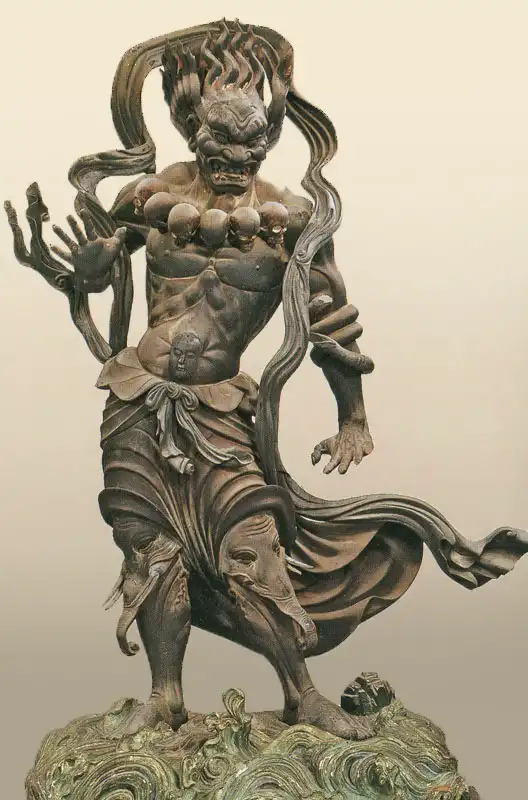
A 13th to 14th-century Japanese Kamakura carving of the General of the Deep Sands.
Sources:
Dudbridge, G. (1970). The Hsi-yu chi: A Study of Antecedents to the Sixteenth-Century Chinese Novel. Cambridge: Cambridge Univ. Press.
Wivell, C.S. (1994). The Story of How the Monk Tripitaka of the Great Country of T’ang Brought Back the Sūtras. In V. Mair (Ed.), The Columbia Anthology of Traditional Chinese Literature (pp. 1181-1207). New York: Columbia University Press.
Wu, C., & Yu, A. C. (2012). The Journey to the West (Vols. 1-4) (Rev. ed.). Chicago, Illinois: University of Chicago Press.
#Sha Wujing#Sandy#Friar Sand#Xuanzang#Tang Monk#Tripitaka#Tang#Journey to the West#JTTW#Lego Monkie Kid#LMK#Sun Wukong#Monkey King#MK
118 notes
·
View notes
Text

玄奘三藏 xuanzang sanzang R-18合集更新 20 sex scene in patron-only post. https://www.patreon.com/posts/95019269 You could preview censored sex scene in pixiv post. https://www.pixiv.net/en/artworks/114403103
48 notes
·
View notes
Note
Are there actual Golden Cicadas in the world? If not what kind of cicada do you think he was (my moneys on the buttery-cicada)
Not to my knowledge anon! There IS such a thing as yellow Monday cicada which is a pretty insect and somewhat golden-ish, but they live in Australia.

But while keeping in mind that I'm no entomologist, I think you are right in saying that a butterfly cicada would make a pretty good model for Golden Cicada if you wanted to make his name literal! They do come from Southeast Asia, and do have lovely golden-ish highlights. Here's an example of the species:

It definitely is fun to think about a potential insect form for Tang Sanzang in his previous incarnation, and personally I would love to see a retelling of JTTW where Golden Cicada became a literal cicada yaoguai in an attempt to full-on rebel against heaven and the Buddha & to fulfill his own more worldly desires/ambitions like many of the other yaoguai in JTTW (and also to give him more similarities to Sun Wukong).
That said, it is important to acknowledge that there are numerous potential metaphorical and religious meanings to the name "Golden Cicada" as well, particularly in regards to cicadas being used to symbolize reincarnation, transformation, and ultimately the achievement of nirvana. @journeytothewestresearch wrote a neat article analyzing some of them which you can read here:
So chances are good that Golden Cicada wasn't a literal cicada, but that his religious name had more to do with what cicadas symbolized and indeed what he would later achieve multiple reincarnations down the road. Either way, there's a lot of possibilities for what Tang Sanzang was in his previous life!
30 notes
·
View notes
Text
Polishing the Mind
In Chinese-Buddhist literature, the influential treatise Cheng Wei Shi Lun (成唯識論) contains the following quote, translated in the book Living Yogacara:1 Polishing their minds, the courageous do not waver. trans. Professor A. Charles Muller This treatise was written by the famous Chinese monk, Xuanzang (玄奘), whom I talked about recently. From his journeys in India, Xuanzang brought back…

View On WordPress
0 notes
Photo

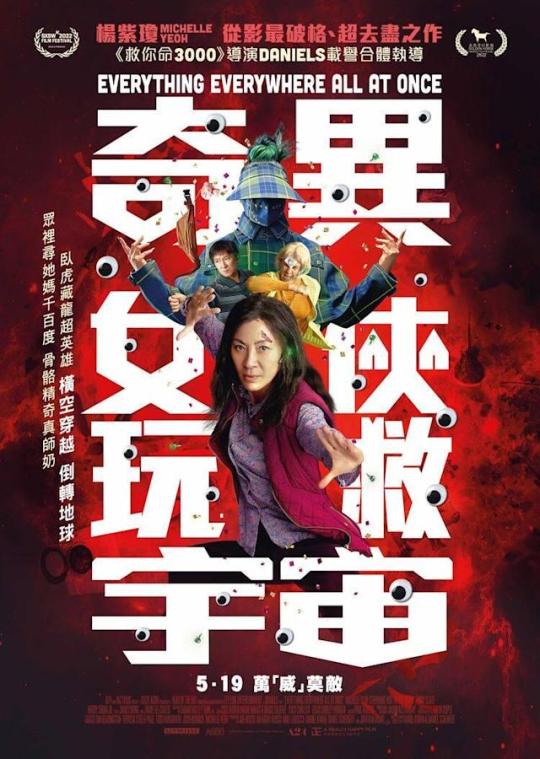
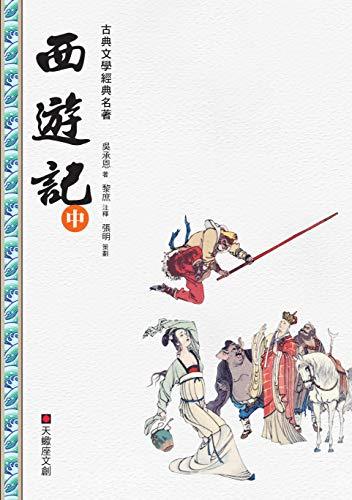


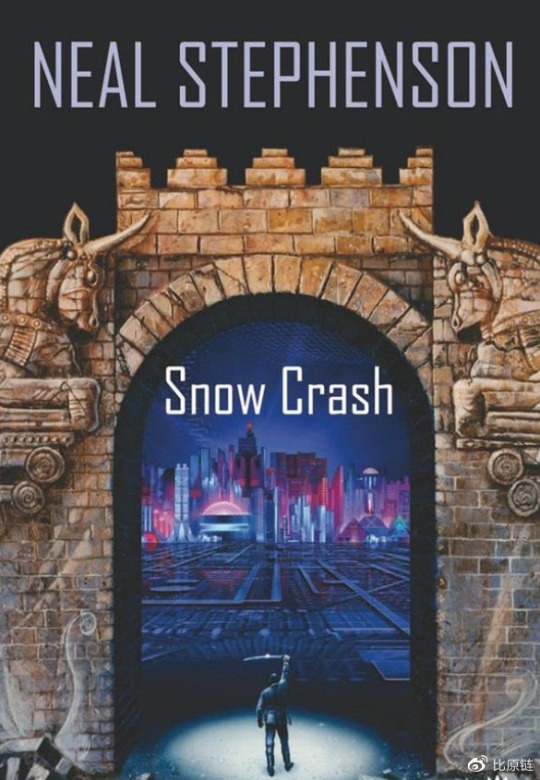

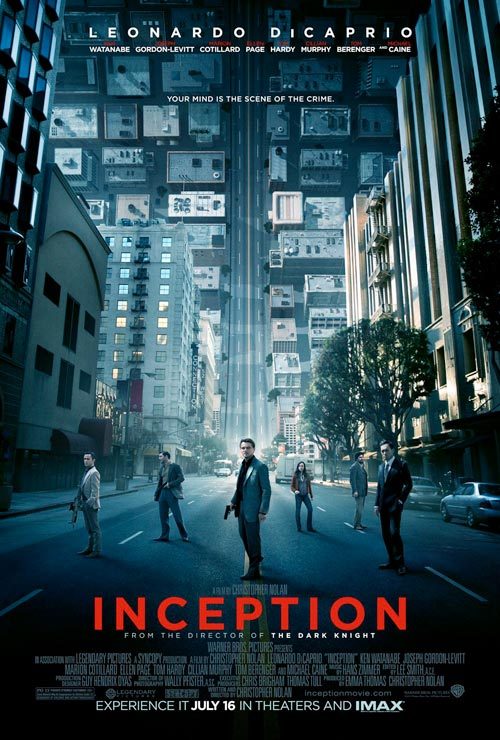
Rise Or Fall? The Complete Understanding Of Metaverse From The Philosophical, Cultural, Scientific And Social Perspectives
There are many recent popular films on ‘Metaverse’: Everything Everywhere All at Once, Doctor Strange in the Multiverse of Madness and Free Guy.
Technology company WayRay promotes its new kind of 'human world' as this: humankind has long been fascinated with a different reality—a different plane of existence, a different identity and a new perspective. To interact with a different reality might have been a dream decades ago, but now it is as real as the phone you are holding today. The technology is now mature enough, and we can all reach into the ‘Metaverse’.
What exactly is a ‘Metaverse’? It was said, “The meta-verse ('Meta’ + ‘Universe') is a virtual ‘reality space’ on the internet where a user can create a ‘human identity’ to live, interact and play, as well as experience things that he could always do in the real world." Metaverse will be another globe running parallel to and circumventing the existing world. The term came from a science fiction Snow Crash by Neal Stephenson in 1992 and the story depicted a virtual world on the internet that has buildings, roads, parks and shopping malls in which we could enjoy ���a collateral life’.
It was pointed out Metaverse has 8 characteristics: (1) living under a virtual identity (2) getting along with new virtual ‘co-beings’ (3) instant and spontaneous movements by you commanding your extended identity in the virtual environment (4) an ‘as-if-real’ immersive experience in the virtual world (5) doing the great things which are humanly impossible for you to try in real life such as flying and roles transforming (6) the self-functioning economy of Metaverse by which you can become rich (7) vast supply of fascinating games and contents; and (8) co-building a ‘post-modern human civilization’.
Metaverse was made possible by scientific achievements. The advent of new technologies like 5G or 6G mobile network, Web 3.0, AI (Artificial Intelligence), VR (Virtual Reality), AR (Augmented Reality) and MR (Mixed Reality) solved many technical problems. The necessary equipment to operate Metaverse is expensive and includes special headset, personal computer, mobile phone, web, projection and kiosk. The ‘money’ transactions there involve innovative softwares like De-Fi (Decentralized Finance), IPFS (Inter-planetary File System) and NFT (Non-fungible Token). Mark Zuckerberg announced that ‘Meta’ (formerly known as Facebook) would soon file patent applications for a number of useful devices such as a pair of ultra-sensitive gloves to make 'Meta' bodily experience almost real. Can you afford all these?
Perhaps I am old, if not senile. The real world is already burdensome enough on a daily basis. My sure horror will come from the additional labour and toil associated with consuming a few hours per day on living in another artificial Metaverse. I get enough, if not more than enough, friends. Why should I meet more virtual people in the disguise of different identities and a lot of them may be crooks? I, nevertheless, envy the energetic ones who can handle two lives and two worlds.
I ask around to find out my friends’ interest on Metaverse. A said, “Communication technology simply makes people unnecessarily busy!” B said, “It’s cool! I want to be a powerful KOL or KOC in such a brave new world.” C said, “If I can make lots of money there, why not? I’m planning to buy some lands there.” D said, “I will be horrified when my 22-year-old girlfriend in Metaverse turns out to be an 80-years-old man!” E said, “Would it be lawful or immoral to attend a drug party in Metaverse?” F said, “How exciting it will be since I can hold a big concert there in the face of Michael Jackson?” G said, “I will transform myself into the most gorgeous girl there and attract loads of boyfriends!” H said, “I am afraid of sexual harassment. An English female beta tester was once groped by a stranger on Horizon Worlds!”
There is a famous philosophical story (莊周蝶夢)(Zhuang Zhou & Butterfly)of our ancient scholar Zhuangzi(莊���)(about 369 to 286 B.C.) that every Chinese knows. Zhuang dreamed that he was a butterfly. He suddenly woke up and found he was still himself, solid and human. He was puzzled and left us with his great theory of Taoism. “Am I really a man that dreamed of being a butterfly or whether I am a butterfly dreaming as a man?” This great Chinese thinker tried to challenge what we took as real might be unreal and what was unreal might be real. Perhaps he was the first one who inspired us on virtual reality thousand years ago. The French philosopher R Descartes (1596-1650) said, “No certain indications by which we may clearly distinguish wakefulness from sleep.” The development of Metaverse as the popular ‘second reality’ will lead more people to pursue a hot debate: can young people in the 23rd century choose to live in a virtual world of butterflies and refuse to live in a human world?
The other amazing Chinese ancient fairy tale protagonist is ‘The Monkey King’. It is based on the ancient story Journey to the West(西遊記) about a famous monk Xuanzang (玄奘) (602-664) who travelled on foot from China to India for the authentic Buddhist scriptures, escorted by Monkey King(孫悟空). This monkey was clever and rebellious. He acquired an immortal life and could transform him into seventy-two different identities in different situations at the same time. Riding clouds in the sky as a vehicle (Monkey King today will probably use Internet as his vehicle), he was able to travel 108,000 miles by a single somersault to meet friends. Would the Metaverse users dream of being a butterfly or Monkey King which were all old prophecies of ‘virtual reality’.
Many predict that your digital existence will become more important than your physical life. In the Metaverse, your life is fascinating with all that you can enjoy. But on earth, you may be lonely and miserable. Virtual life may be joyful. A real life can be sad. Nevertheless, the more humans lose themselves in a non-existent world, the more Artificial Intelligence technology will control us in future. I do not want to live in the virtual world because it will not give me a nice haircut! Do you? Happiness boils down to simplicity.
MLee
Chinese Version 中文版: https://www.patreon.com/posts/shi-kai-shi-huan-67507595?utm_medium=clipboard_copy&utm_source=copy_to_clipboard&utm_campaign=postshare
Movie “Everything Everywhere All at Once” Trailer HK https://youtu.be/E7qroZ-IulA Acknowledgement – A Really Happy Film
Movie “Free Guy” Trailer https://youtu.be/_vBOPZBPOjo Acknowledgement-20th Century Studios HK
What is Metaverse https://youtu.be/ZhD0FtWSiRo Acknowledgement-BBC News
Metaverse development in Korea https://youtu.be/ov_SCy-cKJc Acknowledgement-BBC News
Metaverse – Virtual Teresa Teng https://youtu.be/rN2PNMGtn2Q Acknowledgement-TBV News
Spent 100 days in Metaverse https://youtu.be/mufeRQYgqZc Acknowledgement-Ryan Trahan
Metaverse Song 《元宇宙》歌 https://youtu.be/qwWL58XcIYA Acknowledgement-Leslie Tsang
#Zhuangzi莊子#Xuanzang 玄奘#Monkey King孫悟空#Mark Zuckerberg#Neal Stephenson#Zhuang Zhou & Butterfly莊周蝶夢#Journey To The West西遊記#Free Guy#Snow Crash#Artificial Intelligence#Mixed Reality#Augmented Reality#Virtual Reality#Horizon Worlds#Decentralized Finance#Inter-planetary File System#Non-fungible Token#Everything Everywhere All at Once#Doctor Strange in the Multiverse of Madness
19 notes
·
View notes
Text
April 12, Xi'an, China, Daci'en Temple/大慈恩寺 and the Giant Wild Goose Pagoda/大雁塔 (Part 3 - History):
The entrance to the Xuanzang Memorial Hall:

Xuanzang/玄奘 (602 - 664 AD; birthname Chen Yi/陈祎) was a famous Chinese monk, scholar, and translator who journeyed throughout Central Asia and India to bring Buddhist sutras from India and translate them into Chinese. He was also the founder of the Consciousness-Only School/唯识宗 of Chinese Mahayana Buddhism.
A statue of Xuanzang in the memorial hall:

Xuanzang's 17-year journey from Chang'an (Xi'an) to India and back drawn out on a map. The route he took to India is in red, and the return route he took back to Chang'an is in green. On his way he traveled through many kingdoms in Central Asia and India, and he would later compile his experiences into the work known as Records of the Western Regions/《大唐西域记》. This work is still very important for historians and archaeologists studying Central Asian and Indian history, because it gives locations of important sites, such as the ruins of Nalanda monastery (phonetically translated as 那烂陀寺 in Chinese) in modern day Bihar. The Ming-era novel Journey to the West/《西游记》 was also very loosely based on this work; more specifically, the novel was based on folk tales about Xuanzang's travels, which was in turn loosely and partially based on Xuanzang's experiences recorded in this book.

(Metal?) wall murals and a giant wood relief depicting Xuanzang's early life and his journey to India and back (generally viewed in order from left to right since it's a continuous narrative):



Biography of the Tang Dynasty Buddhist Tripitaka Master Xuanzang of the Great Ci'en Temple/《大慈恩寺三藏法师传》 (alternatively translated simply as "The Life of Xuanzang"), written by Xuanzang's disciple Huili/慧立 in 688 AD.

An artifact not strictly related to Xuanzang: Ritual Confession of Mercy Temple/《慈悲道场忏法》, a Buddhist repentance work/忏文 written for Emperor Wu of Liang (464 - 549 AD) for the purpose of conducting a "ritual of transcendence" (called 超度; I could not find an English translation for this so this is my own translation) for the emperor's deceased wife. This particular version was printed in Ming dynasty in 1608.


Ceiling of the memorial hall, decorated with Sanskrit characters:

The second exhibition hall also has wall murals and a giant wood relief, this time depicting Xuanzang's life after returning to China:



Xuanzang has stated that the purpose of his journey was to bring back Buddhist sutras in their original Sanskrit, so that the integrity of the original texts may be better preserved in future translations and a more faithful interpretation of the sutras may be achieved. When he returned from India in 645 AD, he brought back with him 657 Buddhist texts in Sanskrit, and with support from Emperor Taizong of Tang, he proceeded to translate these texts into Chinese with his team of translators.
Daci'en Temple still preserves less than 20 leaves of the original palm leaf manuscript/贝叶经 brought to China by Xuanzang. I didn't get to see these artifacts myself, but just for reference, here are some potato quality pictures I've found online:


Below is a part of a (Ming-era? Not sure) printed copy of the Mahā-prajñāpāramitā Sūtra (《大般若经》 or 《大般若波罗蜜多经》 in Chinese), which was translated into the Chinese text seen here by Xuanzang and his team:

Part of Complete Translations by Master Xuanzang/《玄奘法师译撰全集》:

A view of the exhibited part of the collection of works that were either by Xuanzang or written about Xuanzang. Being an aspiring translator myself and knowing that these were works connected to a great translator who lived 1300+ years ago, there is just a feeling of awe here that can't be described properly in words...

There's also the twin steles associated with Xuanzang at the foot of the Giant Wild Goose Pagoda. The stele on the west (below left) was written from right to left, composed by Emperor Taizong of Tang Li Shimin/唐太宗 李世民, while the stele on the east (below right) was written from left to right, and was composed by Emperor Gaozong of Tang Li Zhi/唐高宗 李治 (the two emperors are father and son). The calligraphy for both steles was provided by Chancellor Chu Suiliang/中书令 褚遂良. Both steles gave an account of Xuanzang's life and praised him for his achievements, and both were erected in 653 AD. Since I didn't go into the pagoda, I didn't see these two steles (I believe one of them isn't at the pagoda anymore? It might be at Beilin Museum now), so here are pictures of the ink rubbings from Open Museum (open in new tab to view the full image):


And finally, some fun souvenirs from the gift shop! These are tiny incense pellet holders topped with the twelve zodiac animals

A funny greeting card that translates to "And We miss you too" (朕 is a first person pronoun used exclusively by emperors to refer to themselves; today many people use 朕 to jokingly refer to themselves)

#2024 china#xi'an#china#daci'en temple#大慈恩寺#giant wild goose pagoda#大雁塔#xuanzang#玄奘#buddhist temple#chinese history#chinese culture#journey to the west#mahayana buddhism#buddhism#history#culture
73 notes
·
View notes
Text
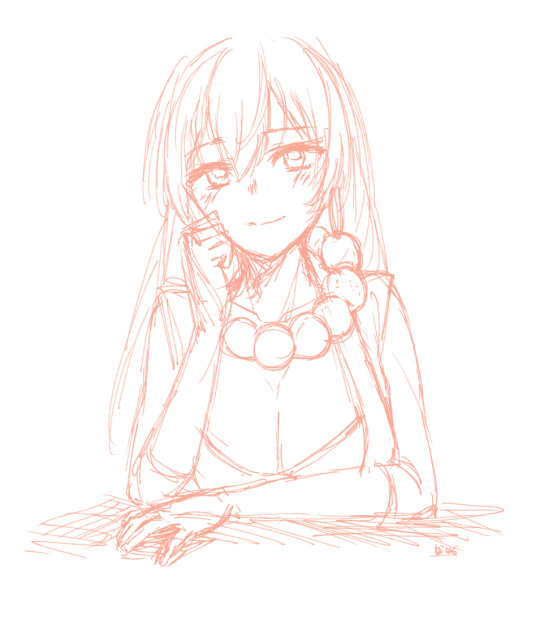
27/108
37 notes
·
View notes
Text
Xuanzang's Cassock (2012) 玄奘袈裟



Director: Zhang Xin Screenwriter: Wu Huaijie Starring : Song Tao / Ji Wen Genre: Drama Country/Region of Production: Mainland China Language: Mandarin Chinese Date: 2012 Duration: 83 minutes Type: Crossover
Summary:
The movie "Xuan Zang's Kasaya" tells the story of the treasure "Hundred Gold Clouds and Water Moji Kasaya" left by Master Xuanzang, an eminent monk of the Tang Dynasty, who was dedicated in Mogao Grottoes on the eve of the Revolution of 1911. Suddenly, various forces gathered in Dunhuang, each with different purposes in search of the treasure cassock. Rongqing, the Minister of Academic Affairs, strongly recommended Yao Kun, a bachelor of the Hanlin Academy, to go to Dunhuang to search for Xuanzang's cassock, hoping to use the magic power of the treasure to save the precarious Qing Dynasty. Yao Kun and his cousin, antique businessman Xia Zifeng, disguised themselves as businessmen and headed to the desert. Yao and Xia went to the "Sihai Inn" and met the proprietress Yu Niang. They also met Guan Yanfei and Guan Yanruo, brothers and sisters, sons of the Gansu General Soldier. The Guan brothers and sisters also came here to find the cassock. His elder brother Guan Yanfei was secretly coerced by Yuan Shikai.
In order to protect the family from Yuan Shikai's persecution, he secretly assisted the commander Cang Lang sent by Yuan Shikai to snatch Xuanzang's cassock and sell it to foreigners in exchange for arms. The simple and reckless Guan Yanruo thought he was looking for the cassock. It was for the sake of the imperial court, and out of eagerness to protect the treasure. He was afraid that something might happen if the cassock fell into the hands of a merchant, so he wanted to find the cassock before Yao and Xia, so he opposed them at every turn. The clues to find the cassock were so intertwined and obscure that everyone racked their brains and couldn't find the way. In the end, the knowledgeable Yao Kun first found the clue. Guan Yanfei took advantage of his plan and simply used Yao Kun to follow him to gradually get closer to the treasure cassock.
In the confrontation with Yao Kun, Guan Yanruo was gradually moved by Yao Kun's integrity and kindness and developed a good impression. In the process of searching for Kasaya, he discovered that his family was being controlled by Yuan Shikai's special envoy, Cang Lang. The search for the cassock was also ordered by Yuan Shikai, not to protect the national treasure. As everyone gets closer and closer to the cassock, Cang Lang forces Guan Yanfei to do whatever it takes to get the cassock as soon as possible. In order to get the final clue, Guan Yanfei puts Yao and Xia into a dungeon. After being tortured, Xia Zifeng told Guan Yanfei where the cassock was buried in order to save his cousin Yao Kun. So Canglang took Guan Yanfei and his men straight to Baobogou. At this time, Guan Yanruo used a trick to kill Yao Kun and Xia Zifeng. During the escape, the three were discovered by the Qing soldiers guarding them, and they were assisted by Yu Niang at the critical moment.
After defeating the Qing soldiers and rescuing them, it turned out that Yu Niang was a private treasure-protecting organization that had been operating near Dunhuang. After learning that Yao Kun was ordered to protect the cassocks, she had already sent people to observe secretly. In the end, while protecting the treasure With the help of others, Yao Kun and others got the cassocks first, but were surrounded by soldiers brought by Cang Lang and Guan Yanfei. When they were desperate, Yu Niang and her men arrived again. It turns out that Yu Niang and Xia Zifeng are both folk treasure protectors, and they lurked in the desert to protect the national treasure. A melee broke out between good and evil. Guan Yanfei tried to protect his sister and had a dispute with Canglang. Guan Yanruo was injured by Canglang in the melee. Guan Yanfei also died under Canglang's knife while trying to save his sister. In the end, Yao Kun killed the wolf and ended the melee. Yao Kun returned to the capital with the treasure cassock. Looking back on what he saw and heard during the treasure hunt, he deeply felt that the Qing government could no longer save the country. And the Qing Empire that he worked hard for ended its 268-year rule in depression... No so-called "divine power" can withstand the rolling tide of history.
Source: https://movie.douban.com/subject/20427158/
Link: N/A
#Xuanzang's Cassock#玄奘袈裟#jttw media#jttw movie#movie#lost media#live action#crossover#tang sanzang reference
3 notes
·
View notes
Photo

「むむむっ?」 by eno ※Illustration shared with permission from the artist. Please do not remove the source. Make sure to support the original artwork by visiting the source!
633 notes
·
View notes
Text

Heart Sutra ~ A sutra that describes “The Heart of the Perfection of Wisdom" (3)
The merits of “Prajna-paramita Hridhya Sutra” – Part 2 [Part 1]
There is also a commentary that describes as below:
‘When Xuanzang crossed over Silk Road to India, he traveled with his shadow as his companion along the way, where there were no birds to fly, no beasts to meet and no water plants to be found. During this time, Xuanzang was chanting the ‘Heart Sutra’ with Avalokitesvara Bodhisattva in mind. At one point, he encountered a group of evil demons and was surrounded in front and behind. He prayed to Avalokitesvara Bodhisattva for help, but this had no effect and the demons did not leave. Next, believing in the power of the Heart Sutra, he recited it, and the demons fled at once. Thanks to this, Xuanzang was spared.’
It emphasises that the efficacy of the spiritual experience lies in the scripture itself and that reciting the scripture orally is an excellent manifestation of the spiritual experience. And although Avalokitesvara Bodhisattva appears in the Heart Sutra and is the embodiment of Prajna-paramita, they too is only a character in the Heart Sutra.
This commentary also states that if the Prajna-paramita Sutra is recited, it has miraculous efficacy of detoxification, curing illness and expelling disasters, as well as annihilating the sins and karma of previous lives.
Furthermore, it says that while it is beneficial to recite and memorise the Heart Sutra alone, if this sutra is copied and given to others to explain, the merit is greater and some spiritual benefit can be gained. In the "Great Storage of Scriptures", the ‘Pure Land Rebirth Mantra’ is given at the end of the translation annotation. And it is written that if the mantra ‘Gate Gate Paragate Parasamgate Bodhi Svaha’ at the end of the Heart Sutra is chanted together with it, this is a spiritual experience that will lead to swift rebirth in the Pure Land of Ultimate Bliss (Sukhavati). In other words, you can die peacefully.
These are just a few, and most commentators state through their annotations that the spiritual experiences of the Heart Sutra are extremely manifest. [Click here to continue]

般若心経 〜「智慧の完成」の精髄を述べる経典 (3)
『般若波羅蜜多心経 (梵: プラジュナーパーラミター・フリダヤ・スートラ) 』の功徳 〜 その2(これまで)
“玄奘三蔵がインドに渡るとき、途中は飛ぶ鳥もなく、獣に出会うこともなく、水草もないところを自分の影を伴友にして行った。その間、三蔵は観音菩薩を念じ『般若心経』を口ずさんでいた。あるとき、悪鬼どもに遭遇し、前後を囲まれてしまった。そこで彼は観音菩薩の助けを念じたが、一向に効きめがなく、悪鬼は退散しなかった。次に『般若心経』の威力を信じ口誦すると、悪鬼どもは一目散に逃げ去った。お陰で三蔵は難を免れた。“という『般若心経』の霊験を玄奘三蔵が受けたことを記している注釈書もある。
観音菩薩は『般若心経』の中に出てくる菩薩で、般若波羅蜜多の体現者ではあるが、その菩薩も所詮、『般若心経』の登場人物にすぎなく、霊験の効能は経典そのものにあり、経典を口誦することがすぐれた霊験を表すことを強調している。
この注釈書には『般若心経』を読誦するならば、解毒、治病、除災などの霊験もあり、先世の罪業も消滅する効能が見られるとも述べている。
さらに、『般若心経』を一人だけで読誦し記憶したりすることも効験があるが、この経典を写経して、それを他の人に与え、説明するならば、その功徳は多大で何らかの霊験を受けるはずだとも述べている。
その他にも、卍続蔵経(大蔵経)には、往生浄土神呪という真言を訳註の最後に示し、その真言と一緒に『般若心経』の末尾にある「ギャーテー・ギャーテー・ハーラーギャーテー・ハーラーギャーテー・ボージー・ソワカ」という真言を唱えると、速やかに極楽浄土に往生できる霊験を得ると記されている。つまり、安らかに死ねるということだ。
これらはほんの一部に過ぎず、ほとんどの注釈者たちは『般若心経』の霊験の効き目は著しく現れることを、註釈を通して述べている。
(続くはここをクリック)
#zen#mindfulness#buddhism#buddha#wisdom#philosophy#nature#art#heart sutra#xuanzang#journey to the west#spiritual experience#spiritual power#sukhavati
107 notes
·
View notes
Text
Tripitaka's Buddha Title
The Tang Monk Tripitaka is elevated in spiritual rank at the end of Journey to the West (Xiyouji, 西遊記, 1592 CE) for braving untold dangers and successfully retrieving the scriptures from India. The Tathagata enfeoffs him as the “Buddha of Candana (Sandalwood) Merit” (Zhantan gongde fo, 旃檀功德佛). Many readers may be surprised to learn that this is actually an established Buddhist deity and not just the creation of author-compiler Wu Cheng’en. In this article, I would like to briefly explore this Buddha’s religious background, iconography, purpose, and relationship to the worship of Xuanzang (玄奘, 602-664 CE), the historical Tang monk on whom Tripitaka is based.

A modern devotional painting of the Buddha of Candana Merit, a.k.a. Candanaśrī or Candanashri (Sk: चन्दनश्री; lit: “Glorious Sandalwood”).
#Tripitaka#Xuanzang#Tang Monk#Mr. Tang#Tang sanzang#Journey to the West#JTTW#Lego Monkie Kid#Golden Cicada Elder#LMK#MK#Sun Wukong#Monkey King#Buddha#Buddhism
72 notes
·
View notes